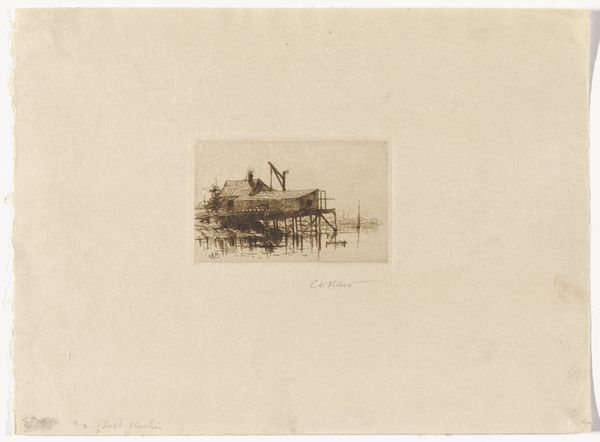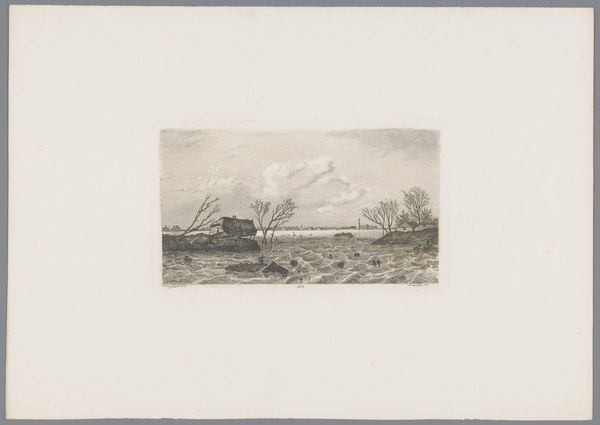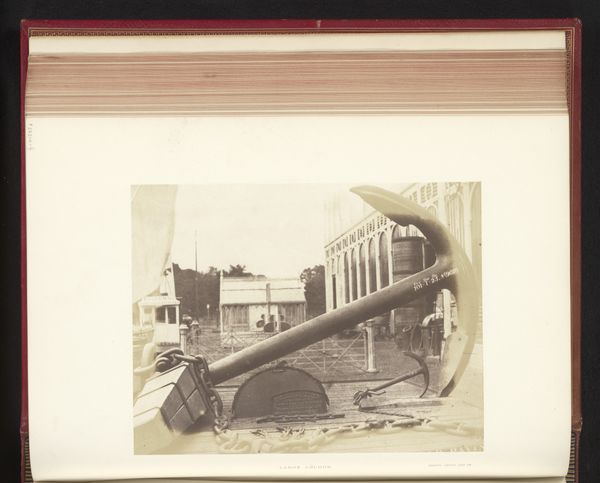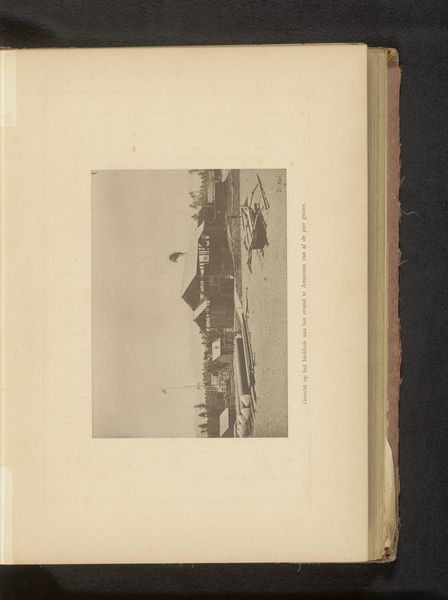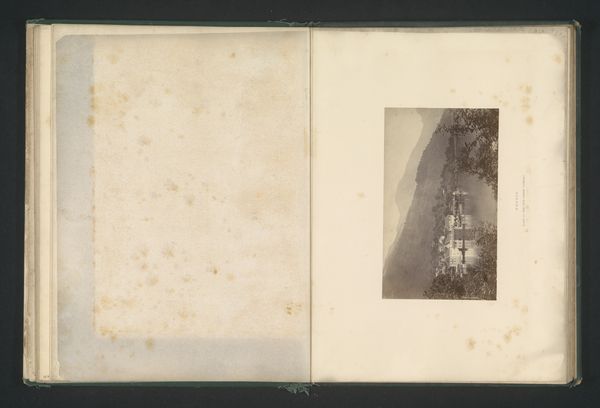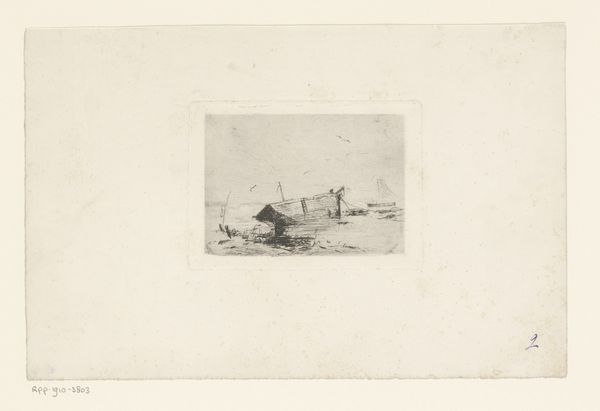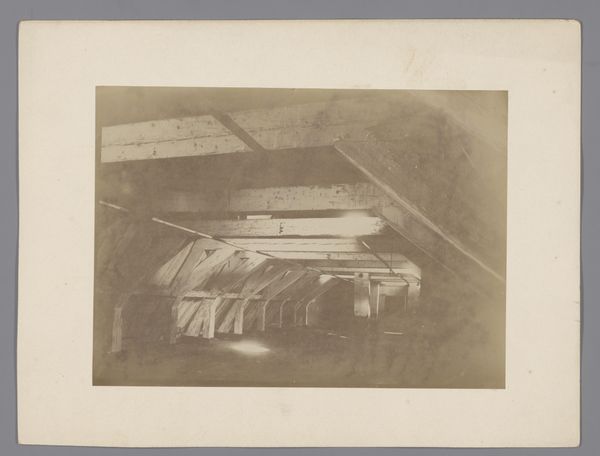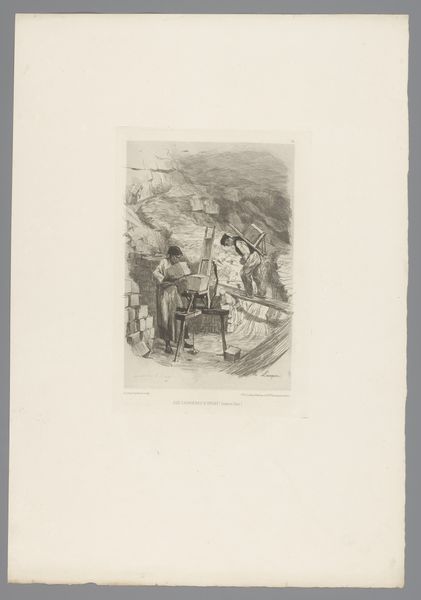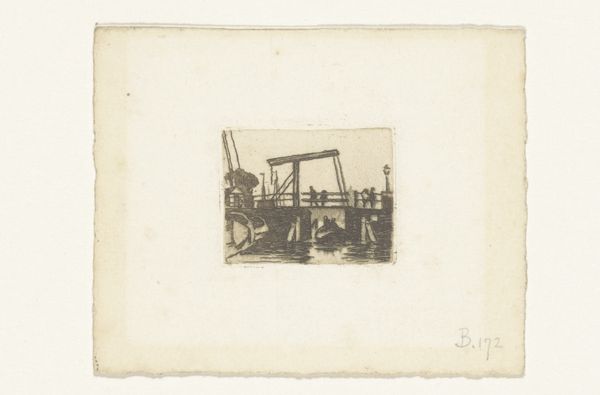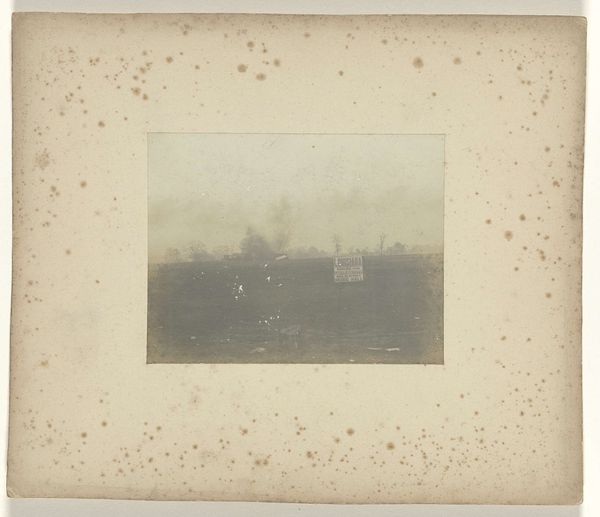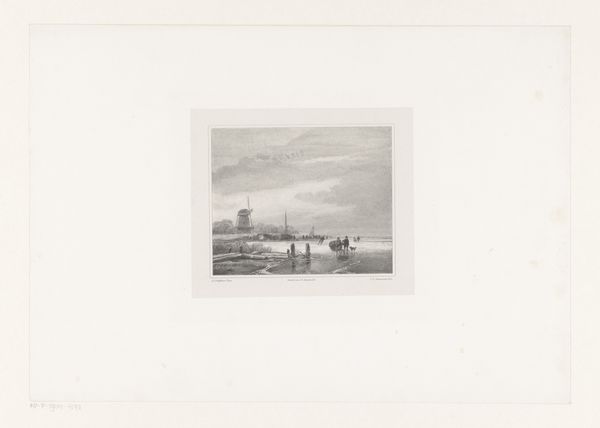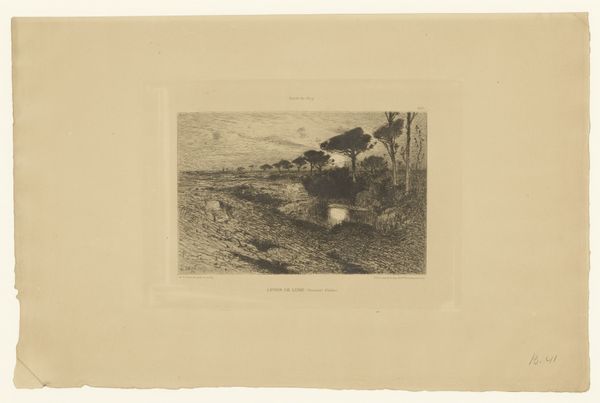
print, photography
#
portrait
# print
#
photography
#
genre-painting
#
realism
Dimensions: height 79 mm, width 102 mm
Copyright: Rijks Museum: Open Domain
Curator: Looking at this print, I feel the heavy stillness before a storm. Editor: Indeed, that greyscale lends a sense of foreboding. This photograph, "Reddingssloep op het dek van een schip," was captured between 1904 and 1905, from the lens of Jan Schüller. It's currently held at the Rijksmuseum. What do you read into the lifeboat, poised as it is? Curator: Lifeboats are complex symbols. On the surface, they promise rescue. But here, hoisted precariously on deck, it suggests an awareness of ever-present peril, of mortality always looming on the horizon. These men preparing it seem resigned, almost enacting a ritual, not driven by hope but duty. The boat, an object imbued with dual possibilities—life and death. Editor: A ritual made possible by materials, too. Look at the textures Schüller captures, the grain of the wood in the boat, the slick metal of the hoisting gear, the coarse cloth of the workers' clothes. Each speaks to the tangible labor, the hands that built and maintained these tools of survival. It humanizes the story, reminding us of the work inherent to maritime existence. Do you see any stylistic lineage here? Curator: The photographic realism firmly places the work in the early 20th century—it's not stylized or romanticized, unlike earlier maritime paintings which are pure fantasy. Instead, it echoes the straightforward depictions of genre paintings—labor and routine documented in careful detail. But more profoundly, it's the awareness of unseen forces and faith that connects the piece to, for example, earlier depictions of the ark. It's the symbol of potential salvation. Editor: Yet a very earthly salvation, achievable through practical knowledge and applied physics. That hoist system represents ingenuity and the calculated taming of nature. I'm left pondering the nature of their work, their skill, as an elemental drama plays out. It almost begs for some color! Curator: In its way, this photograph preserves a powerful narrative about human vulnerability in the face of a powerful, capricious force. Editor: I agree. Seeing the labor and means allows a more personal interaction, and an engagement beyond the usual "beauty". A powerful way to end a visit at the Rijksmuseum!
Comments
No comments
Be the first to comment and join the conversation on the ultimate creative platform.
